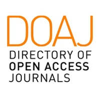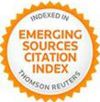Abstract
This study presents the development and validation of a comprehensive assessment framework for evaluating socio-cultural impacts of urban development interventions in historic precincts. Through mixed-method grounded theory and rigorous psychometric analysis, the Urban Heritage Socio-Cultural Impact Assessment (UHSCIA) scale was developed to quantify the multifaceted relationships between urban development and heritage preservation. The scale encompasses four primary constructs: sense of place, social cohesion, cultural assets, and local economy. Confirmatory factor analysis validated the scale's psychometric properties, yielding strong reliability coefficients and satisfactory model fit indices. The validated framework provides urban planners, policymakers, and heritage professionals with an evidence-based tool for evaluating development proposals' impacts on the socio-cultural fabric of historic urban environments.
Keywords
Full Text:
PDFDOI: http://dx.doi.org/10.2423/i22394303v15n1p207
References
Abdurahiman, S., & Kasthurba, A. K. (2022). Urban Conservation of Heritage-Sensitive Zones in India: A Methodological Approach BT - Conservation of Architectural Heritage. In A. Versaci, H. Bougdah, N. Akagawa, & N. Cavalagli (Eds.), Advances in Science, Technology and Innovation (pp. 281–289). Springer International Publishing. https://doi.org/10.1007/978-3-030-74482-3_22
Abdurahiman, S., Kasthurba, A. K., Arlikatti, S., & Karimbil, C. (2022). Revitalization of Historic Temple Precincts in urban core areas – a socio-cultural assessment. Urbanism. Architecture. Constructions/Urbanism. Arhitectura. Constructii, 13(2).
Abdurahiman, S., Kasthurba, A. K., & Nuzhat, A. (2022). Impact of Urban Heritage on social values in historic urban precincts - Public perception of the Kuttichira community, Kerala. SCIRES-IT - SCIentific RESearch and Information Technology, 12(1), 19–30. https://doi.org/10.2423/i22394303v12n1p19
Abdurahiman, S., Kasthurba, A. K., & Nuzhat, A. (2023). Mapping and Decoding the Trajectory of Heritage- Centered Urban Transformation Assessments. SCIRES-IT - SCIentific RESearch and Information Technology, 13(2), 1–16.
Abdurahiman, S., Kasthurba, A. K., & Nuzhat, A. (2024a). Assessing the socio-cultural impact of urban revitalisation using Relative Positive Impact Index (RPII). Built Heritage, 8(1), 8.
Abdurahiman, S., Kasthurba, A. K., & Nuzhat, A. (2024b). Framing a Conceptual Approach for Urban Conservation in Historic Cities-A Case of Kuttichira, Kerala. In Conservation of Architectural Heritage (CAH): Developing Sustainable Practices (Vol. 4, pp. 41–49). Springer, Cham.
Aitken, R., & Campelo, A. (2011). The four Rs of place branding. Journal of Marketing Management, 27(9–
, 913–933.
Arbuckle, J. L. (2013). IBM SPSS Amos 22 user’s guide Chicago. IL:IBM Corp.
Ashley-Smith, J. (1999). Risk assessment for object conservation. Edições Butterworth. Heinemann, Oxford.
Azzopardi, E., Kenter, J. O., Young, J., Leakey, C., O’Connor, S., Martino, S., Flannery, W., Sousa, L. P., Mylona, D., & Frangoudes, K. (2023). What are heritage values? Integrating natural and cultural heritage into environmental valuation. People and Nature, 5(2), 368–383. Barbour, R., Kitzinger, J., Frankland, J., & Bloor,
M. (2011). Some Issues Arising in the Systematic Analysis of Focus Group Materials. In Developing Focus Group Research. https://doi.org/10.4135/9781849208857.n10
Battiste, M. (2016). Research ethics for chapter protecting Indigenous knowledge and heritage. Ethical Futures in Qualitative Research: Decolonizing the Politics of Knowledge, 111.
Cachadinha, C., Pedro, J. B., & Fialho, J. C. (2011). Social participation of community living older persons: importance, determinants and opportunities. International Conference on Inclusive Design" the Role of Inclusive Design in Making Social Innovation Happen", London, 2011.
Cancellieri, G., Turrini, A., Perez, M. J. S., Salido-Andres, N., Kullberg, J., & Cognat, A. S. (2018). Social Innovation in Arts & Culture: Place-regeneration initiatives driven by arts & culture to achieve social cohesion. In Social Innovation (pp. 79–103). Routledge.
Cheshmehzangi, A. (2023). Urban Regeneration and Creating Urban Landscapes: Enhancing City Life Experiences in Lijiang. In Mapping Urban Regeneration: City Life Experiences in Yunnan, China (pp. 139– 169). Springer.
Cominelli, F., & Greffe, X. (2012). Intangible cultural heritage: Safeguarding for creativity. City, Culture and Society, 3(4), 245–250. Cronbach, L. J. (1951). Coefficient alpha and the internal structure of tests.
Psychometrika, 16(3), 297–334.
Cui, Y., Gjerde, M., & Marques, B. (2023). Encouraging sense of community in Aotearoa New Zealand: exploring the role of community participation in public open space planning. Cities & Health, 1–10.
De Vaus, D. A. (2012). Surveys in social research / D.A. de Vaus. In Surveys in social research.
Du Cros, H., Bauer, T., Lo, C., & Rui, S. (2005). Cultural heritage assets in China as sustainable tourism products: Case studies of the Hutongs and the Huanghua section of the Great Wall. Journal of Sustainable Tourism, 13(2), 171–194.
Elnokaly, A., & Elseragy, A. (2013). Sustainable Heritage Development: Learning from Urban Conservation of Heritage Projects in Non Western Contexts. European Journal of Sustainable Development, 2(1), 31–54. https://doi.org/10.14207/ejsd.2013.v2n1p31
Evans, G. (2002). Cultural planning: An urban renaissance? Routledge.
Fairclough, G., Dragićević-Šešić, M., Rogač-Mijatović, L., Auclair, E., & Soini, K. (2014). The Faro Convention,
a new paradigm for socially-and culturally-sustainable heritage action? Култура/Culture, 8, 9–19.
Fornell, C., & Larcker, D. F. (1981). Structural equation models with unobservable variables and measurement error: Algebra and statistics. Sage Publications Sage CA: Los Angeles, CA.
Franco, M., Haase, H., & Correia, S. (2018). Exploring factors in the success of creative incubators: A cultural entrepreneurship perspective. Journal of the Knowledge Economy, 9(1), 239–262.
García, M., Eizaguirre, S., & Pradel, M. (2015). Social innovation and creativity in cities: A socially inclusive governance approach in two peripheral spaces of Barcelona. City, Culture and Society, 6(4), 93–100.
Giuliani, M. V. (2003). Theory of attachment and place attachment. In M. Bonnes, T. Lee, & M. Bonaiuto (Eds.), Psychological theories for environmental issues. (pp.137-170).
Glaser, B. G., & Strauss, A. L. (2017). Discovery of grounded theory: Strategies for qualitative research. Routledge.
Graham, B., & Howard, P. (2012). The Ashgate research companion to heritage and identity. Ashgate Publishing, Ltd. Gražulevičiūtė, I. (2006). Cultural heritage in the context of sustainable development. Environmental Research, Engineering & Management, 37(3).
Grimm, R., Fox, C., Baines, S., & Albertson, K. (2013). Social innovation, an answer to contemporary societal challenges? Locating the concept in theory and practice. Innovation: The European Journal of Social Science Research, 26(4), 436–455.
Gustafsson, C. (2019). CONSERVATION 3.0–Cultural Heritage as a driver for regional growth. SCIRES-IT- SCIentific RESearch and Information Technology, 9(1), 21–32.
Gustafsson, C., & Ijla, A. (2017). Museums: An incubator for sustainable social development and environmental protection. International Journal of Development and Sustainability, 5(9), 446–462.
Hair, J. F., Black, W. C., Babin, B. J., & Anderson, R. E. (2010). Multivariate data analysis: Global edition. NJ: Pearson Higher Education Upper Saddle River.
Hannerz, U. (1996). Transnational connections: Culture, people, places. Taylor & Francis US.
Henseler, J., Ringle, C. M., & Sarstedt, M. (2015). A new criterion for assessing discriminant validity in variance-based structural equation modeling. Journal of the Academy of Marketing Science, 43, 115–135.
Howell Smith, M. C., Babchuk, W. A., Stevens, J., Garrett, A. L., Wang, S. C., & Guetterman, T. C. (2020). Modeling the use of mixed methods–grounded theory: Developing scales for a new measurement model. Journal of Mixed Methods Research, 14(2), 184–206.
Hu, L., & Bentler, P. M. (1998). Fit indices in covariance structure modeling: Sensitivity to underparameterized model misspecification. Psychological Methods, 3(4), 424.
İslamoğlu, Ö. (2018). The importance of cultural heritage education in early ages. International Journal of Educational Sciences, 22.
Jain, D. (2023). Culture, Spaces, and People: Urban Dynamics in Contemporary India. Taylor & Francis. Jöreskog, K. G. (1969). A general approach to confirmatory maximum likelihood factor analysis.
Psychometrika, 34(2), 183–202. Jöreskog, K. G. (1971). Simultaneous factor analysis in several populations.
Psychometrika, 36(4), 409–426.
Jöreskog, K. G., & Sörbom, D. (1981). LISREL 5: analysis of linear structural relationships by maximum
likelihood and least squares methods;[user’s guide]. University of Uppsala.
Klamer, A. (2012). Crafting Culture: The importance of craftsmanship for the world of the arts and the economy at large. Erasmus University of Rotterdam.
Kousa, C., Lubelli, B., & Pottgiesser, U. (2023). Towards a sustainable approach to reconstruction of residential heritage: Insights from international case studies. Heritage and Sustainable Development, 5(2), 315–338.
Kusumowidagdo, A., Ujang, N., Rahadiyanti, M., & Ramli, N. A. (2023). Exploring the sense of place of traditional shopping streets through Instagram’s visual images and narratives. Open House International, 48(1), 2–22.
Lawshe, C. H. (1975). A quantitative approach to content validity. Personnel Psychology, 28(4), 563–575.
Lenzerini, F. (2024). The Spirit and the Substance. The Human Dimension of Cultural Heritage from the Perspective of Sustainability. In Cultural Heritage, Sustainable Development and Human Rights (pp. 46–65). Routledge.
Lewicka, M. (2011). Place attachment: How far have we come in the last 40 years? Journal of Environmental Psychology, 31(3), 207–230.
Lindquist, R. (1991). Don’t forget the pilot work! In Heart and Lung: Journal of Critical Care.
Logan, W. (2012). Cultural diversity, cultural heritage and human rights: towards heritage management as human rights-based cultural practice. International Journal of Heritage Studies, 18(3), 231–244.
Loulanski, T. (2007). Cultural heritage and sustainable development: exploring a common ground. The Journal of International Media, Communication, and Tourism Studies, 5, 37–58.
Lynn, M. R. (1986). Determination and quantification of content validity. Nursing Research, 35(6), 382– 386.
Madandola, M., & Boussaa, D. (2023). Cultural heritage tourism as a catalyst for sustainable development; the case of old Oyo town in Nigeria. International Journal of Heritage Studies, 29(1–2), 21–38.
Manzo, L. C., & Perkins, D. D. (2006). Finding common ground: The importance of place attachment to community participation and planning. Journal of Planning Literature, 20(4), 335–350.
Martins, T., Braga, A., Ferreira, M. R., & Braga, V. (2023). Start today and finish yesterday-Social innovation as a contribution to the community. Global Business and Organizational Excellence, 42(5), 22–36.
Myers, N. D., Ahn, S., & Jin, Y. (2011). Sample size and power estimates for a confirmatory factor analytic model in exercise and sport: A Monte Carlo approach. Research Quarterly for Exercise and Sport, 82(3), 412–423.
Neyman, J. (1992). On the two different aspects of the representative method: the method of stratified sampling and the method of purposive selection. Springer.
Nunnally, J C, & Bernstein, I. H. (1978). Chapter 7: the assessment of reliability. Psychometric Theory, 264– 265.
Nunnally, Jum C. (1978). An overview of psychological measurement. Clinical Diagnosis of Mental Disorders: A Handbook, 97–146.
Ocejo, R. E. (2017). Masters of craft: Old jobs in the new urban economy. Princeton University Press.
Pe, Y., Gunawan, S., & Shieh, C.-J. (2014). Correlations between social engagement and quality of life of the elderly in China. Revista Internacional de Sociologia, 72(S-2), 105–118.
Pendlebury, J. (2008). Conservation in the Age of Consensus. Routledge.
Pendlebury, J. (2015). Heritage and policy. In The Palgrave handbook of contemporary heritage research
(pp. 426–441). Springer.
Polit, D. F., & Beck, C. T. (2006). The content validity index: are you sure you know what’s being reported?
Critique and recommendations. Research in Nursing & Health, 29(5), 489–497.
Quinn, B. (2013). Arts festivals, urban tourism and cultural policy. In Culture and the City (pp. 69–81). Routledge.
Reitz, J. G., Breton, R., Dion, K. K., & Dion, K. L. (2009). Multiculturalism and social cohesion: Potentials and challenges of diversity.
Rodwell, D. (2008). Conservation and sustainability in historic cities. John Wiley & Sons.
Romein, A., & Trip, J. J. (2017). The role of business incubators in the development of sustainable clusters of cultural and creative industries.
Santagata, W. (2011). Cultural districts. In A Handbook of Cultural Economics, Second Edition. Edward Elgar Publishing.
Savvides, A., Papagiannakis, A., Vitopoulou, A., Mela, A., Pancholi, S., Yigitcanlar, T., Guaralda, M., Ismail, W.
A. W., Said, I., Mar, A. E., No, S., Vol, C., Lecturer, V. M., Academy, B., Studies, E., Gavri, A., Academy, B., Studies, E., Youmans, A., … Position, F. (2015). Regenerating Public Space : Urban Adaptive Reuse. City, Territory and Architecture, 1(1), 13. https://doi.org/10.5923/j.arch.20150504.01
Scannell, L., & Gifford, R. (2010a). Defining place attachment: A tripartite organizing framework. Journal of Environmental Psychology, 30(1), 1–10.
Scannell, L., & Gifford, R. (2010b). The relations between natural and civic place attachment and pro- environmental behavior. Journal of Environmental Psychology, 30(3), 289–297.
Schiopu, A. F., Vasile, D. C., & Ţuclea, C. E. (2015). Principles and best practices in successful tourism
business incubators. Amfiteatru Economic Journal, 17(38), 474–487.
Shehata, A. M. (2023). Sustainable-Oriented Development for Urban Interface of Historic Centers.
Sustainability, 15(3), 2792.
Smith, L. (2006). Uses of heritage. Routledge.
Smith, T. D., & McMillan, B. F. (2001). A Primer of Model Fit Indices in Structural Equation Modeling.
Stoffle, R. (2020). Cultural heritage and resources. In Social Impact Analysis (pp. 191–232). Routledge.
Su, W. (2011). A study of the relationship between social participation and attitude toward aging of the retired teachers. Taiwan Economic Forum, 6(2), 62–81.
Sudman, S., & Kalton, G. (1986). New developments in the sampling of special populations. Annual Review of Sociology, 12(1), 401–429.
Theodora, Y. (2020). Cultural heritage as a means for local development in Mediterranean historic cities— The need for an urban policy. Heritage, 3(2), 152–175.
Throsby, D. (2000). Economics and Culture. In Economics and Culture. https://doi.org/10.1017/cbo9781107590106
Ullman, J. B., & Bentler, P. M. (2012). Structural equation modeling. Handbook of Psychology, Second Edition, 2.
UNESCO. (2011). Recommendation on the Historic Urban Landscape. Records of the General Conference - 31st Session, November. https://whc.unesco.org/uploads/activities/documents/activity-638-98.pdf
Van Teijlingen, E. R., Rennie, A. M., Hundley, V., & Graham, W. (2001). The importance of conducting and reporting pilot studies: The example of the Scottish Births Survey. Journal of Advanced Nursing. https://doi.org/10.1046/j.1365-2648.2001.01757.x
Walters, T., & Insch, A. (2018). How community event narratives contribute to place branding. Journal of Place Management and Development, 11(1), 130–144.
Wang, Y. (2021). Mapping urban residents’ place attachment to historic environments: a case study of
Edinburgh. University of Glasgow.
Waterton, E., & Smith, L. (2010). The recognition and misrecognition of community heritage. International Journal of Heritage Studies, 16(1–2), 4–15.
Yan, W.-J., & Li, K.-R. (2023). Sustainable Cultural Innovation Practice: Heritage Education in Universities and Creative Inheritance of Intangible Cultural Heritage Craft. Sustainability, 15(2), 1194.
Yigitcanlar, T., Inkinen, T., Yigitcanlar, T., & Inkinen, T. (2019). Global Knowledge Precinct Best Practice.
Geographies of Disruption: Place Making for Innovation in the Age of Knowledge Economy, 239–259.
Zaei, M. E., & Zaei, M. E. (2013). The impacts of tourism industry on host community. European Journal of Tourism Hospitality and Research, 1(2), 12–21.
Zancheti, S. M., & Jokilehto, J. (1997). Values and urban conservation planning: some reflections on principles and definitions. Journal of Architectural Conservation, 3(1), 37–51.
Zhao, H. (2023). Understanding Shiminhua in Chinese Greater Bay Area: Internalizing urban identity and negotiating place attachment. Regional Science Policy & Practice.
Zulkifli, N., Aimran, N., & Deni, S. (2023). The performance of unweighted least squares and regularized unweighted least squares in estimating factor loadings in structural equation modeling. International Journal of Data and Network Science, 7(3), 1017–1024.
Article Metrics
Metrics powered by PLOS ALM
Refbacks
- There are currently no refbacks.
Copyright (c) 2025 Shahim Abdurahiman

This work is licensed under a Creative Commons Attribution-NonCommercial-NoDerivatives 4.0 International License.
SCIRES-IT, e-ISSN 2239-4303
Journal founded by Virginia Valzano






